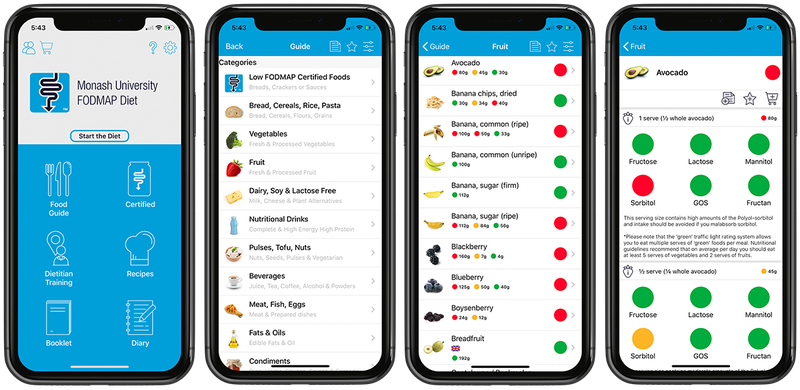Defined: What is the Low FODMAP Diet?
- Troubled Tummies

- Jan 9, 2020
- 3 min read
Updated: Jan 26, 2020

There seems to be a new diet emerging every day. Diets are growing increasingly specialized. This particular diet, the Low FODMAP Diet, is specifically tailored for those with IBS (Irritable Bowel Syndrome), and there's some interesting science to back it up.
FODMAP stands for: Fermentable Oligo-, Di-, Mono-saccharides And Polyols.
These are the scientific terms that are utilized to classify groups of carbs that are known for triggering digestive issues. The most common symptoms include: bloating, gas, stomach pain and irregular digestive movements. There is research that suggests the negative impact of FODMAPs can even include pain and cramping, reflux, food intolerances, insomnia, and fatigue among others. Further, people who suffer from IBS (Irritable Bowel Syndrome) are 50 percent more likely to have an anxiety disorder and over 70 percent more likely to have a mood disorder such as depression.
Most people who follow a the FODMAP diet have IBS. To find out if you have IBS or want to learn more you can read more about IBS here.
Are you interested to learn more? Let's dive into the details.
What are Low FODMAP foods?
The primary dietary sources of these four groups are as follows:
Oligosaccharides: Wheat, rye, legumes and various fruits and vegetables, such as garlic and onions.
Disaccharides: Milk, yogurt and soft cheese. Lactose is the main carb.
Monosaccharides: Various fruit including figs and mangoes, and sweeteners such as honey and agave nectar. Fructose is the main carb.
Polyols: Certain fruits and vegetables including blackberries and lychee, as well as some low-calorie sweeteners like those in sugar-free gum.
In other words, foods that are high in FODMAPs are not easily digestible for many people. This group of fermentable carbs aggravate gut symptoms in sensitive individuals. They are found in a vast array of foods.
The way the Low FODMAP Map Diet works is by simply removing these food groups f
The Three Phase Process of the low FODMAP Diet
Once your doctor tells you to start the diet (do not do this diet unless your doctor or nutritionist recommends it!), you need to know it is a three stage process.
Phase 1: Elimination - For 3-5 weeks (or as long as your doctor advocates), you do not eat any foods containing high fod-maps. You should see significant improvement in your symptoms within the first few weeks! Yay!
Phase 2: Reintroduction - Following a three day pattern, you test each food group to see which ones you, specifically, are sensitive to. If you react to a certain food group, for example, fructose, then it is best for you to never eat foods in the fructose category every again. (An example of a food in this group are apples.) An example of a reintroduction test would be to eat 1/4 of an apple one day 1 and measure your reaction, if any. On the second day, you would eat 1/2 of an apple and measure your reaction. On the third day, you would eat 2 apples and then measure your reaction. If you don't react to 1/4 or 1/2 but react to two full apples, then now you know how much your digestive system can tolerate.
Phase 3: Maintenance - After all the groups have been tested, you should know which ones your body is sensitive too and which ones you should avoid, unfortunately, for forever. Some people are completely cured of digestive ailments after phase 1 and 2 and can go back to eating normally! However, others are simply made aware of what foods they cannot tolerate.
Here is a list of high and low FODMAP foods to avoid and ones to eat. It's quite extensive!
While this diet can seem overwhelming, I actually completed this diet last year, and it wasn't as bad as it seems! Check out this starter guide that breaks down eating Low FODMAP!
I will be writing an article about my experience on the Low FODMAP Diet soon. Keep an eye out for it!




Comments